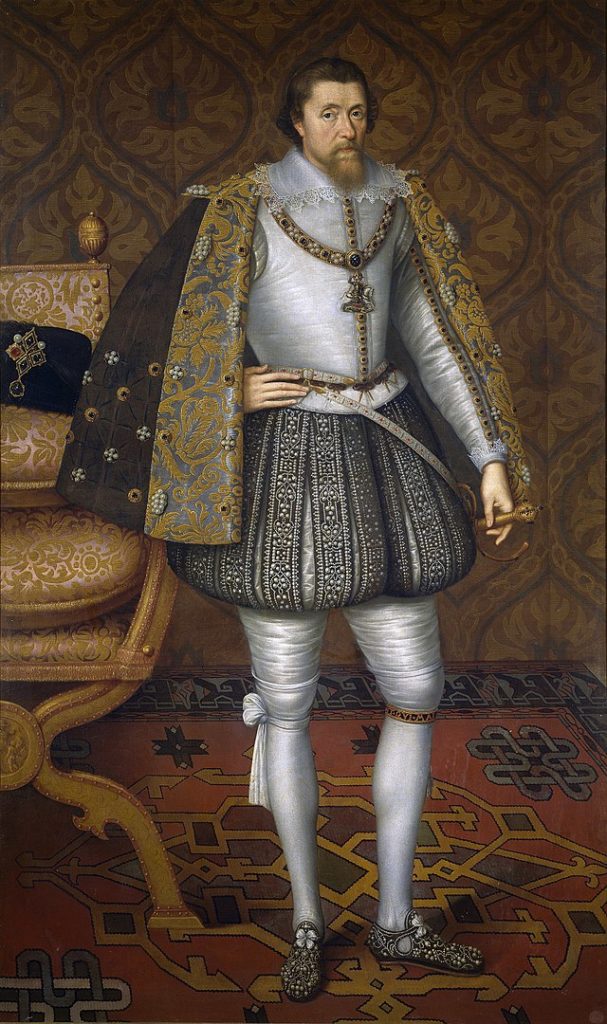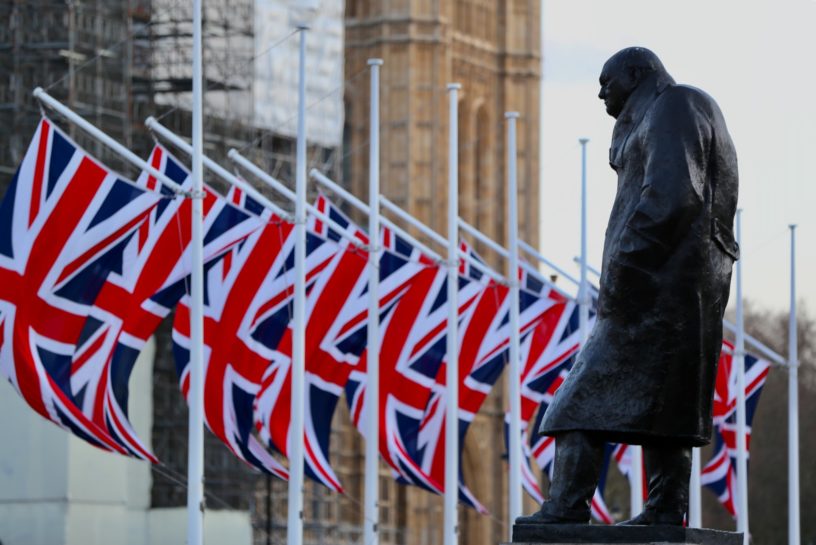
By LHOON – Wikimedia
Top 10 Interesting Facts about the British Union Jack Flag
The Union Flag also is known as Union Jack, is the national flag of the United Kingdom. It goes by this name because it is made up of symbols from three countries that are united under one Sovereign.
These countries are England and Wales, Scotland and Northern Ireland. The flag has been an integral part of Britain’s history and tradition.
The flag is not only used in the three countries forming the Kingdom but is also used in Canada. It is known as the Royal Union Flag in Canada and serves for official purposes.
Smaller British Overseas Territories use the flag for official purposes. It also appears on the upper flagpole of flags to countries that were under the British.
1. The flag is made up of three other flags

Photo by Frederick Tubiermont on Unsplash
The Union Flag, or Union Jack, is the national flag of the United Kingdom.
It got its name from combining crosses from three countries that make up the United Kingdom. These countries are England and Wales, of Scotland and Ireland.
The three heraldic crosses that made up the Union Jack flag were from the patron saint of each country. Saint George, England and Wales patron saint, had a white cross on a white background.
Saint Andrew, the patron saint of Scotland, had a diagonal white cross on a blue background. England’s and Scotland’s flags were combined in 1606.
The cross saltire of St Patrick, patron saint of Ireland, was a diagonal red cross on a white background. This was combined with the other two in 1801 after the act of Union of Ireland with England and Scotland.
2. Wales has no part in the flag
While this might seem confusing, when the three countries were under the United Kingdom; Wales was historically under England, as a principality, and could not be included on the flag.
The United Kingdom is made up of four constituent countries; Wales, England, Scotland and Ireland.
The only way that the dragon will find itself on the Flag is if one of the countries votes to leave the union. This is because the flag may be changed to something new.
3. The flag was designed by King James I

By John de Critz – Wikimedia
The Union Jack Flag was designed by King James I of Scotland after he inherited the thrones of England and Scotland in 1606. He wanted to create a flag for the two kingdoms and therefore put together the two crosses of the respective nations, and thus the Union Flag came to be.
Ireland was added to the flag in 1801 after joining the United Kingdom. Although the three kingdoms shared the same flag, they remained to be separate entities.
A royal decree in 1606 stated that England’s flag, a red cross on a white background, also known as St George’s Cross, and the flag of Scotland, a white saltire or St Andrew’s Cross on a blue background, would be merged, to form the flag of England and Scotland for maritime purposes.
4. The Union Jack is not its name

By Iris Tong – Wikimedia
We all most probably call or know the flag as the Union Jack, this may not be its rightful name. the name Union Jack was used only when the flag was flown at sea.
While on land, the flag was traditionally known as the Union Flag. Myths are surrounding this term.
Those that do not refer to the flag as Union Flag believe that its rightful name is The Union, Jack. This term was used by British admirals since its inception.
In 1902, it was officially announced that either name could be used. So, whichever name you call it by, you are right.
5. The name Jack was from a maritime flag
Even before the 1600s, the term jack was used to refer to a small flag flown from the mast of a ship. Around 1606, a smaller version the Union Jack was flown on ship masts.
The flag would then be referred to as the jack, jack flag or King’s jack. It was until 1674 when this nickname switched into His Majesty’s Jack or Union Jack.
The flags are not only on Naval vessels but are also worn by the Royal Navy. Many believe this is when it should be rightfully be called the Union Jack.
As a royal flag, it was flown at sea on civil and military ships from both England and Scotland. King Charles restricted the use of the flag on royal ships in 1634.
6. The flag was to be flown at sea

By LHOON – Wikimedia
When the flag was first designed by King James I, it was flown at sea only. The civil and military ships from England and Scotland flew them on their vessels. Even before the royal decree was passed, the land forces flew the flag.
After the Acts of Union 1707, the flag gained a legalised status as the ensign armorial of the Kingdom of Great Britain, which was a newly created state.
It was later adopted by land forces in 1707 the only difference was that the blue hue on the land flags was close to blue in Scotland’s flag.
7. Ireland was not in the initial plan
Since was not part of the United Kingdom in the early 1600s, its flag, which is the famous Cross of St. Patrick was not included during the flag’s inception.
Ireland officially became part of the United Kingdom in 1606 and later on in 1922 became its state. Only North Ireland retained its British status then.
The three flags were combined in 1606 and are still in use to date.
8. The blue shade of the flag has changed
The blue shade in the British Union Jack flag has changed over time. The current Union Flag is deep navy blue also known as Pantone 280.
This same shade was used as the Blue Ensign of the Royal Navy’s Blue Squadron. These shades were used on maritime flags depending on their durability.
In 2003, the Scottish Parliament suggested that Scotland’s flag change to a lighter royal blue also known as Pantone 300.
The blazon of the old union flag was azure compared to the current flag.
9. There is no real code of conduct surrounding the flag
Most countries have a code of conduct guiding the use of the Nations’ flag. You would not find the flag on attires or in people’s homes.
Well, the British Union Jack flag has no code of conduct. The flag can be reproduced in its original form on merchandise, printed materials, and other memorabilia.
There is also no specific way that the British Union Jack flag should be folded. All you will need to do is fold it neatly in readiness for the next use.
10. 23 Countries use the Union Jack flag

Photo by Amber Weir on Unsplash
23 countries around the world still fly the British Union Jack flag.
They are small British territories and Islands that use the Union Flag in their flag design.
The big nations that fly this flag are New Zealand and Australia. New Zealand may soon have a new flag if the referendum passes. Their flag has a silver fern that relates to the country.
Canada did away with their Red Ensign flag and adopted the Maple Leaf as their official flag in the 1960s. The public embraced the new national symbol that represented its independence.
The state of Hawaii still features the Union Jack Flag on the upper left corner of the flag.
Planning a trip to Paris ? Get ready !
These are Amazon’s best-selling travel products that you may need for coming to Paris.
Bookstore
- The best travel book : Rick Steves – Paris 2023 – Learn more here
- Fodor’s Paris 2024 – Learn more here
Travel Gear
- Venture Pal Lightweight Backpack – Learn more here
- Samsonite Winfield 2 28″ Luggage – Learn more here
- Swig Savvy’s Stainless Steel Insulated Water Bottle – Learn more here
Check Amazon’s best-seller list for the most popular travel accessories. We sometimes read this list just to find out what new travel products people are buying.










